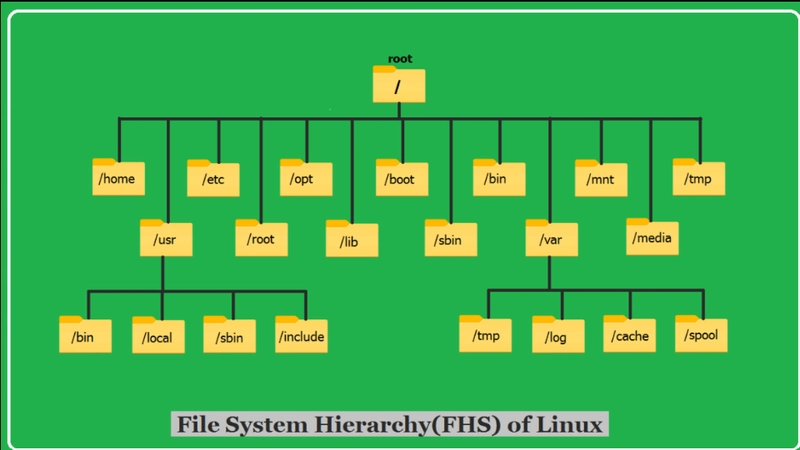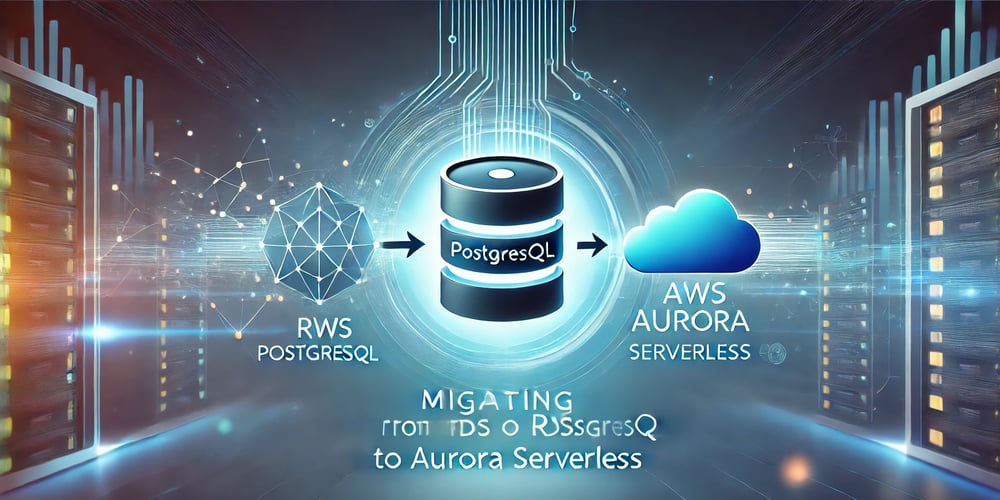Understanding Linux and Its Directory Structure
Introduction: Linux is a powerful and versatile operating system that has become a cornerstone of technology, powering everything from smartphones and servers to supercomputers. Its robust architecture and open-source nature have attracted developers, system administrators, and businesses worldwide. At the heart of Linux is its directory structure, an organized hierarchy essential for the smooth functioning of the system. This article provides a comprehensive guide to understanding Linux and its directory structure, complete with practical use cases to highlight its importance. Table of Contents Introduction Linux Directory Structure Explained Practical Use Case: Server Deployment Why Linux is Indispensable Conclusion` What is Linux? Linux is a family of open-source operating systems based on the Linux kernel. It is widely known for its flexibility, security, and scalability, making it suitable for a range of applications, including desktop computing, web servers, and cloud environments. The operating system is built on the principles of collaboration and transparency, allowing developers and users to customize it according to their needs. Key Features of Linux: Multiuser Environment: Supports multiple users simultaneously. Stability: Rarely crashes, even under heavy workloads. Customizability: Offers freedom to tailor the system Cost-Effective: Most distributions are free to use Whether you're deploying enterprise solutions or exploring software development, Linux provides a strong foundation for innovation. Linux Directory Structure Explained The Linux file system follows a tree-like hierarchy starting at the root directory (/). Each directory under the root has a specific role and purpose. Understanding these directories is crucial for navigating Linux effectively. / (Root Directory) Purpose: The root directory is the starting point of the Linux file system. All other directories branch out from it. Use Case: Admins/super user uses / to manage the overall system structure. /bin (Essential Binaries executable) Purpose: The /bin directory is reserved for essential command-line programs that are available for all system users. These binaries are so crucial that they must be accessible even if other parts of the filesystem are unavailable (e.g., when or is not mounted). Use Case: Commands like ls, mkdir, and cp reside here, enabling basic file operations for users. /etc (Configuration Files) - Purpose: Houses system-wide configuration files and directories. - Use Case: Modify /etc/ssh/sshd_config to set up SSH for secure remote access. /home (User Directories) Purpose: Contains personal directories for each user. Use Case: Developers store source code, projects, and personal data in /home/username. /var (Variable Files) - Purpose: Holds log files, cache, and other variable data that changes dynamically. - Use Case: Monitor server activity through /var/log/httpd/access.log. /dev (Device Files) - Purpose: Represents hardware devices as files. - Use Case: Mount a USB drive using /dev/sdb to access its content. /usr (User Programs and Libraries) - Purpose: Stores user-installed software and system libraries. **- Use Case: **Install and access custom applications like Git in /usr/local/bin. /tmp (Temporary Files) - Purpose: Provides temporary storage for applications and programs. - Use Case: Temporary data from a script is stored in /tmp during execution. /boot (Boot Loader Files) - Purpose: Contains files needed to boot the system, including the kernel and bootloader configuration. **- Use Case: **Update the kernel and verify changes in /boot. Practical Use Case: Server Deployment Imagine deploying Linux as a web server to host an enterprise application: Step 1: Installation Install a Linux distribution (e.g., Ubuntu, CentOS) on a virtual machine. Allocate sufficient storage for /var (log files), /home (website assets), and /tmp (temporary data). Step 2: Web Server Setup Install Apache: sudo dnf install httpd. Place web content in /var/www/html/. - Start the service: sudo systemctl start httpd. Step 3: Monitoring Analyze logs in /var/log/httpd/ to track traffic and troubleshoot errors. Use /bin utilities for diagnostics (e.g., df for disk space). This practical example highlights how Linux directories facilitate efficient server management. Why Linux is Indispensable Linux's directory structure is designed for clarity and organization, empowering users to manage their systems effectively. Its modularity ensures that every file and folder serves a distinct purpose, enabling seamless navigation. Additionally, Linux stands out for its: - Open-source nature: A hub of collaboration and innovation. - Security: Enhanced protection through features like SELinux. - Versatility: Runs on hardware ranging from embedded devices to supercomputers. By mastering Linux and its directories, users unlock limitless potential for development

Introduction:
Linux is a powerful and versatile operating system that has become a cornerstone of technology, powering everything from smartphones and servers to supercomputers. Its robust architecture and open-source nature have attracted developers, system administrators, and businesses worldwide. At the heart of Linux is its directory structure, an organized hierarchy essential for the smooth functioning of the system. This article provides a comprehensive guide to understanding Linux and its directory structure, complete with practical use cases to highlight its importance.
Table of Contents
Introduction
Linux Directory Structure Explained
Practical Use Case: Server Deployment
Why Linux is Indispensable
Conclusion`
What is Linux?
Linux is a family of open-source operating systems based on the Linux kernel. It is widely known for its flexibility, security, and scalability, making it suitable for a range of applications, including desktop computing, web servers, and cloud environments. The operating system is built on the principles of collaboration and transparency, allowing developers and users to customize it according to their needs.
Key Features of Linux:
- Multiuser Environment: Supports multiple users simultaneously.
- Stability: Rarely crashes, even under heavy workloads.
- Customizability: Offers freedom to tailor the system
- Cost-Effective: Most distributions are free to use
Whether you're deploying enterprise solutions or exploring software development, Linux provides a strong foundation for innovation.
Linux Directory Structure Explained
The Linux file system follows a tree-like hierarchy starting at the root directory (/). Each directory under the root has a specific role and purpose. Understanding these directories is crucial for navigating Linux effectively.
/ (Root Directory)
- Purpose: The root directory is the starting point of the Linux file system. All other directories branch out from it.
- Use Case: Admins/super user uses / to manage the overall system structure.
/bin (Essential Binaries executable)
- Purpose: The /bin directory is reserved for essential command-line programs that are available for all system users. These binaries are so crucial that they must be accessible even if other parts of the filesystem are unavailable (e.g., when or is not mounted).
- Use Case: Commands like ls, mkdir, and cp reside here, enabling basic file operations for users.
/etc (Configuration Files)
- Purpose: Houses system-wide configuration files and directories.
- Use Case: Modify /etc/ssh/sshd_config to set up SSH for secure remote access.
/home (User Directories)
- Purpose: Contains personal directories for each user.
- Use Case: Developers store source code, projects, and personal data in /home/username.
/var (Variable Files)
- Purpose: Holds log files, cache, and other variable data that changes dynamically.
- Use Case: Monitor server activity through
/var/log/httpd/access.log.
/dev (Device Files)
- Purpose: Represents hardware devices as files.
- Use Case: Mount a USB drive using /dev/sdb to access its content.
/usr (User Programs and Libraries)
- Purpose: Stores user-installed software and system libraries.
**- Use Case: **Install and access custom applications like Git in /usr/local/bin.
/tmp (Temporary Files)
- Purpose: Provides temporary storage for applications and programs.
- Use Case: Temporary data from a script is stored in /tmp during execution.
/boot (Boot Loader Files)
- Purpose: Contains files needed to boot the system, including the kernel and bootloader configuration.
**- Use Case: **Update the kernel and verify changes in /boot.
Practical Use Case: Server Deployment
Imagine deploying Linux as a web server to host an enterprise application:
Step 1: Installation
- Install a Linux distribution (e.g., Ubuntu, CentOS) on a virtual machine.
- Allocate sufficient storage for /var (log files), /home (website assets), and /tmp (temporary data).
Step 2: Web Server Setup
- Install Apache: sudo dnf install httpd.
- Place web content in /var/www/html/. - Start the service: sudo systemctl start httpd.
Step 3: Monitoring
- Analyze logs in /var/log/httpd/ to track traffic and troubleshoot errors.
- Use /bin utilities for diagnostics (e.g., df for disk space).
This practical example highlights how Linux directories
facilitate efficient server management.
Why Linux is Indispensable
Linux's directory structure is designed for clarity and organization, empowering users to manage their systems effectively. Its modularity ensures that every file and folder serves a distinct purpose, enabling seamless navigation.
Additionally, Linux stands out for its:
- Open-source nature: A hub of collaboration and innovation.
- Security: Enhanced protection through features like SELinux.
- Versatility: Runs on hardware ranging from embedded devices to supercomputers.
By mastering Linux and its directories, users unlock limitless potential for development, deployment, and problem-solving.
Conclusion
Linux is more than just an operating system—it's a platform for exploration and growth. Understanding its directory structure is a fundamental step toward harnessing its power. Whether you're building applications, managing systems, or simply learning something new, Linux equips you with the tools to succeed.
Stay connected as i take you through the basic principle of the Linux command line.
To learn more about cloud and on-prem Infrastructure, Devops and automation.










































































































































































![[The AI Show Episode 143]: ChatGPT Revenue Surge, New AGI Timelines, Amazon’s AI Agent, Claude for Education, Model Context Protocol & LLMs Pass the Turing Test](https://www.marketingaiinstitute.com/hubfs/ep%20143%20cover.png)





























































































































![From Accountant to Data Engineer with Alyson La [Podcast #168]](https://cdn.hashnode.com/res/hashnode/image/upload/v1744420903260/fae4b593-d653-41eb-b70b-031591aa2f35.png?#)




































































































.png?#)













































































































































![Apple Watch SE 2 On Sale for Just $169.97 [Deal]](https://www.iclarified.com/images/news/96996/96996/96996-640.jpg)

![Apple Posts Full First Episode of 'Your Friends & Neighbors' on YouTube [Video]](https://www.iclarified.com/images/news/96990/96990/96990-640.jpg)



































































































































